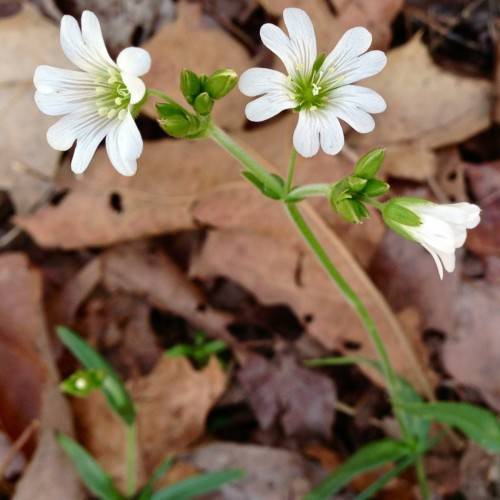
Céraiste Velouté
Cerastium velutinum var. velutinum
Watering:
Minimal
Hardiness Zone:
Sun:
full sun,part shade
Leaf:
Yes
Growth Rate:
Low
Drought Tolerant:
Yes
Salt Tolerant:
Yes
Invasive:
Yes
watering
Daily watering is best for Newfoundland Chickweed. Water enough so that the soil is evenly moist but not so much that it becomes soggy or waterlogged. The best time to water is in the morning so that the plant has enough moisture during the day and the water has had enough time to dry out before nightfall to prevent root rot. Other than that, water when the soil is starting to feel dry an inch below the surface. It is important to avoid long periods of drought, as this can cause wilting and yellowing of the leaves.
sunlight
Newfoundland Chickweed (Cerastium terrae-novae) prefers full sun to partial shade. It will grow in partial shade but will produce smaller leaves and less flowers. It requires at least 6 hours of bright, direct sunlight each day for good growth and flowering. When grown in full sun, Newfoundland Chickweed will flower from mid to late summer. The flowers attract a variety of pollinators including bees, butterflies, and hummingbirds.
pruning
In general, Newfoundland Chickweed should be pruned in late winter or early spring. This species blooms from late spring through early fall, and pruning should always be done prior to flowering for best results. When pruning try to remove up to 1 third of the plant’s height and spread, as this will help to control plant size, promote denser foliage, and can improve flowering. The tips of the branches should be cut just above a pair of well-spaced leaves. Pruning can also be done in late summer, after blooming, and this can help to keep a neat, tidy shape and can also encourage more bushy growth. Removing any dead or dying stems at this time is also recommended.
